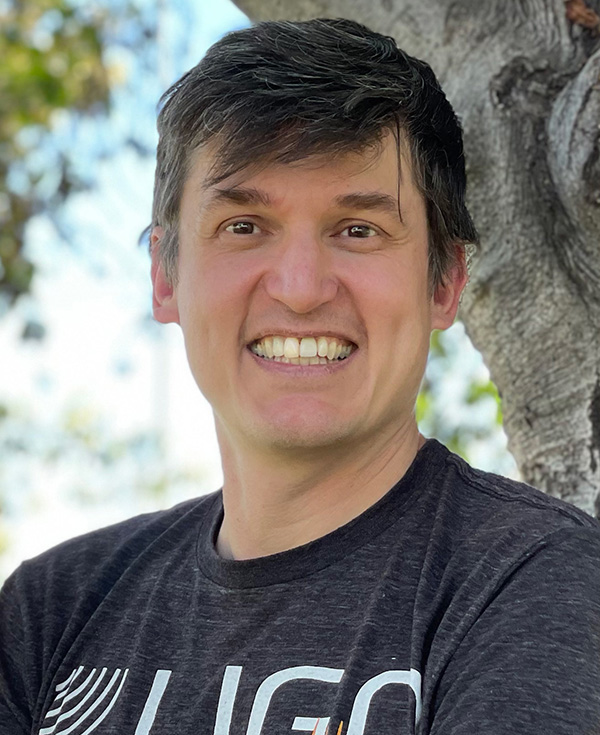Michele Vallisneri is a theoretical physicist at NASA’s Jet Propulsion Laboratory and visiting faculty at the California Institute of Technology, where he obtained his Ph.D in 2002. His research has spanned the detection, analysis, and interpretation of gravitational-wave signals, as well as the analysis of measurements from satellite-based positioning systems.
He has served as U.S. Deputy Mission Scientist for the future space-based gravitational-wave observatory LISA, and currently chairs the LISA Consortium Science User Group. He is a member of the U.S. pulsar-timing-array consortium NANOGrav and of the LIGO Scientific Collaboration, for which he served as internal referee for the GW150914 discovery papers and co-founded the LIGO Open Science Center.
A native of Parma, Italy, he is passionate about the craft of scientific programming and the creative interface of science and art, as explored through music, visualization, and computer programs.
- Ph.D., Theoretical Astrophysics and Relativity, California Institute of Technology (2002)
- Dott. ricerca, Physics, University of Parma, Italy (2000)
- Laurea, Physics, University of Parma, Italy (1997)
- Gravitational-wave science
- Statistical inference in astronomical datasets
- Satellite-based positioning systems
- Computational physics and scientific programming
Jet Propulsion Laboratory (2005–)
- Senior Research Scientist (2021–)
- Principal Research Scientist (2021–)
- Director’s Fellow (2005–2008)
California Institute of Technology (2002–)
- Visiting Faculty (2005–)
- Postdoctoral Scholar and Lecturer in Physics (2002–2005)
- Jean D’Alembert Research Chair, U. Paris Saclay, France (2019)
- NASA Exceptional Scientific Achievement Medal (2017)
- Special Breakthrough Prize; Gruber Cosmology Prize (2016, with LIGO-Virgo coauthors)
- JPL Explorer Award (2016)
- American Physical Society Fellow (2016)
- Italian Society of Gravitation Young Scientist Prize (2008)
- “GipsyX/RTGx, a new tool set for space geodetic operations and research,” W. Bertiger et al., Adv. Space Res. 66, 469 (2020)
- “Learning Bayesian Posteriors with Neural Networks for Gravitational-Wave Inference,” A. J. K. Chua and M. Vallisneri, Phys. Rev. Lett. 124, 041102 (2020)
- “The NANOGrav 12.5-year Data Set: Search For An Isotropic Stochastic GW Background,” NANOGrav collaboration, Astrophys. J. Lett. 905, L34 (2020)
- “Modeling the uncertainties of solar-system ephemerides for robust GW searches with pulsar timing arrays,” M. Vallisneri et al., Astrophys. J. 893, 112 (2020)
- “Observation of Gravitational Waves from a Binary Black Hole Merger,” LIGO/Virgo Collaboration, Phys. Rev. Lett. 116, 061102 (2016)
- “The Emergence of Gravitational Wave Science: 100 Years of Development of Mathematical Theory, Detectors, Numerical Algorithms, and Data Analysis Tools,” M. Holst, O. Sarbach, M. Tiglio, and M. Vallisneri, Bull. AMS 53, 513 (2016)
- “Testing general relativity with low-frequency, space-based GW detectors,” J. R. Gair, M. Vallisneri, S. L. Larson, and J. G. Baker, Liv. Rev. in Relativity 16, 7 (2013)
